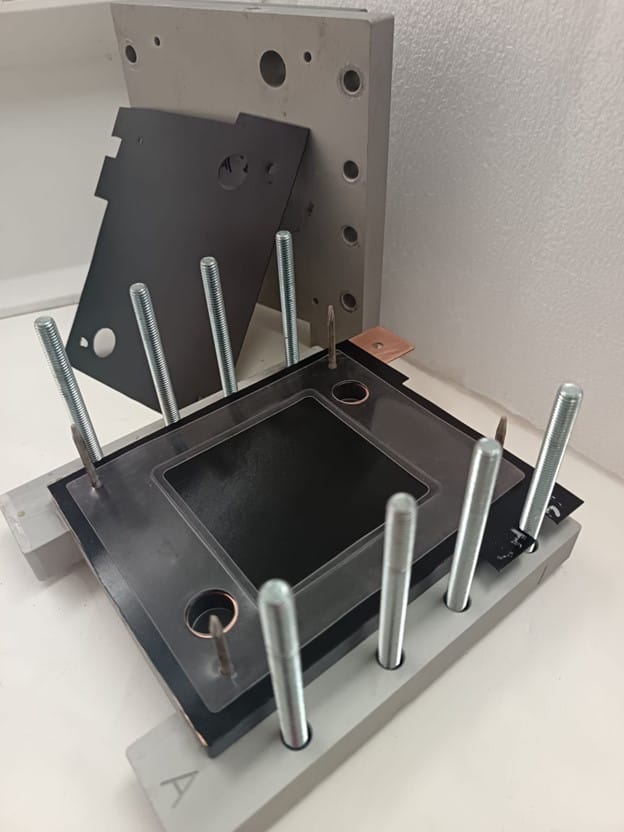One of the main tasks of the R&D team is the research and optimization of new battery components aimed at reducing costs and/or enhancing performance in terms of lifespan, energy density, and temperature range. Among the various topics under investigation—such as new organic electrolytes and alternative ion-exchange membranes—the production of extruded bipolar plates holds significant importance. This is due to the potential to reduce their costs by up to 90% by eliminating the use of perfluorinated polymers while simultaneously increasing their durability.
In this context, a collaboration has been established with the Research Institute of Sweden and InoHub Energy with the goal of developing extruded bipolar plates. Most commercial bipolar plates currently rely on a high proportion of conductive materials mixed with fluorinated polymers. However, the excessive use of conductive materials can negatively affect the long-term stability of the plates, as they are prone to oxidation. To address this issue, one of our key approaches is to reduce the amount of conductive material and blend it with non-fluorinated polymers.
Various base polymers, conductive materials, and compositions will be evaluated through both ex-situ and in-situ experiments to demonstrate their applicability in Redox Flow Batteries.
ACKNOWLEDGEMENT:
This work was supported by the project: IPCEI_IE_FLOW_BESS_012021_2. phase


